Best Practices for Wildlife Management on Western Ranches
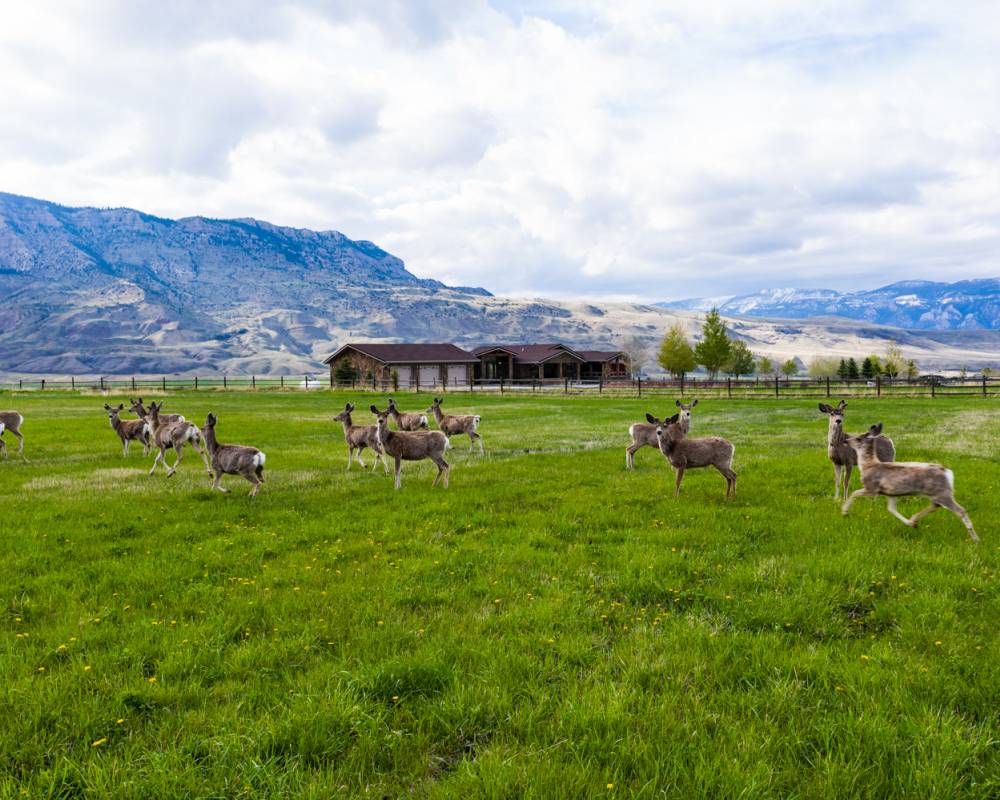
Duncan Clark knows cattle ranching. Growing up in a ranching family in West Texas, he learned the life balance between the magic of wide open spaces and the work it takes to maintain them early on. These days, he lives along Colorado’s Front Range, just shy of the Wyoming border, a short drive from his family’s 6,500-acre cattle ranch where he spends much of his time.
After graduating from Colorado State University with a degree in finance and real estate, Duncan turned his love of the land into a full-time job as a recreational real estate agent for Hayden Outdoors. He’s gone on to help broker a number of notable ranch real estate transactions in the past decade. From summers spent mending fences to balancing the intricacies of maintaining forage in the extreme winter months for wildlife and stock alike, Duncan understands the rhythms of ranch land like few others do. At the heart of that connection is a passion for the intersection of wildlife and ranching. Duncan is an expert in managing and maintaining range and wildlife habitat in a way that elevates both.
“Wildlife management on a ranch is critical for a lot of reasons. The healthier the animal population, the more your ranch is going to be worth.” From guided hunting and fishing income to proper land and habitat management, Duncan dives into the key factors to consider when managing wildlife on ranches in the West.
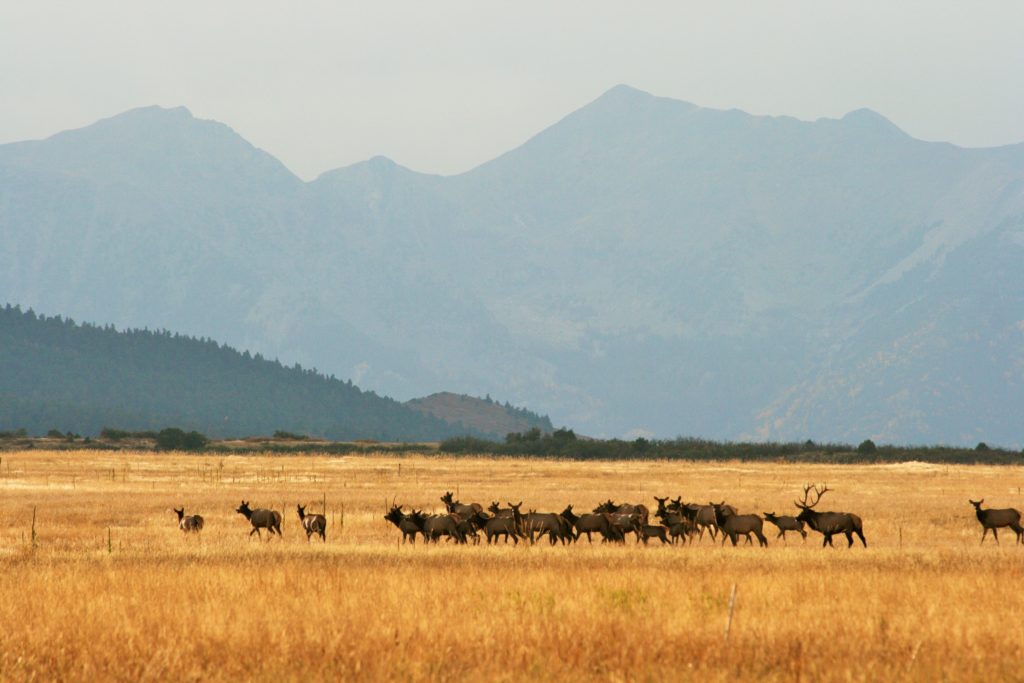
Understanding Western Ranches and Wildlife
Ranches in the West provide ideal habitat for deer, elk, and antelope. Commonly, a ranch will be home to one or two of these species, but if you’re lucky enough to gain access to an expansive ranch in the western plains, you might come across all three. Additionally, ranches with viable water sources, including rivers, streams, ponds, or lakes can offer premier fishing. But as Duncan is quick to point out, you don’t have to be an avid hunter to want to manage the wildlife on your property. “The unique thing about land is that it’s an investment you can enjoy. Maybe you hunt; maybe you don’t. Regardless, driving around a ranch watching herds of elk and deer is a pretty special thing to see”
That said, hunting and fishing can be a viable income opportunity for ranchers in the West. Hunters and anglers spend an estimated $2 billion annually in Colorado alone. “Wildlife is big business in the West, and it provides incentives for landowners to manage this profitable resource, whether the focus is on cattle, farming, or recreation.” Guided elk hunts can garner anywhere from $5,000-$20,000 a hunt depending on trophy quality. If a rancher is able to work with a local outfitter or guide to lease the land for hunting, the revenue can offset a large portion of ranch expenses.
Planning and Implementing a Wildlife Management Plan
Before you begin building your wildlife management plan, it’s important to outline and understand your objectives. This includes the wildlife population objective that will dictate how many animals to harvest from the property each year in order to maintain healthy herd numbers. It’s also essential to work with an expert – local fish, wildlife, and land managers as well as nearby guides and outfitters – in order to optimize both wildlife and cattle health on the ranch. Start by evaluating how many animals you currently have on the property. Trail cams are an extremely useful tool for this. Additional considerations include the size of your property, any adjacent public lands or ranch sizes, and if there’s a well known hunting outfitter in the area. If so, how many animals are they harvesting?
Assess the habitat health, including water sources, food plots, vegetation, and landscape. From there, develop a management plan that balances your economic and conservation goals, working to maximize revenue while simultaneously catering to wildlife health and safety on the property. Manage and monitor progress throughout hunting seasons and year to year.
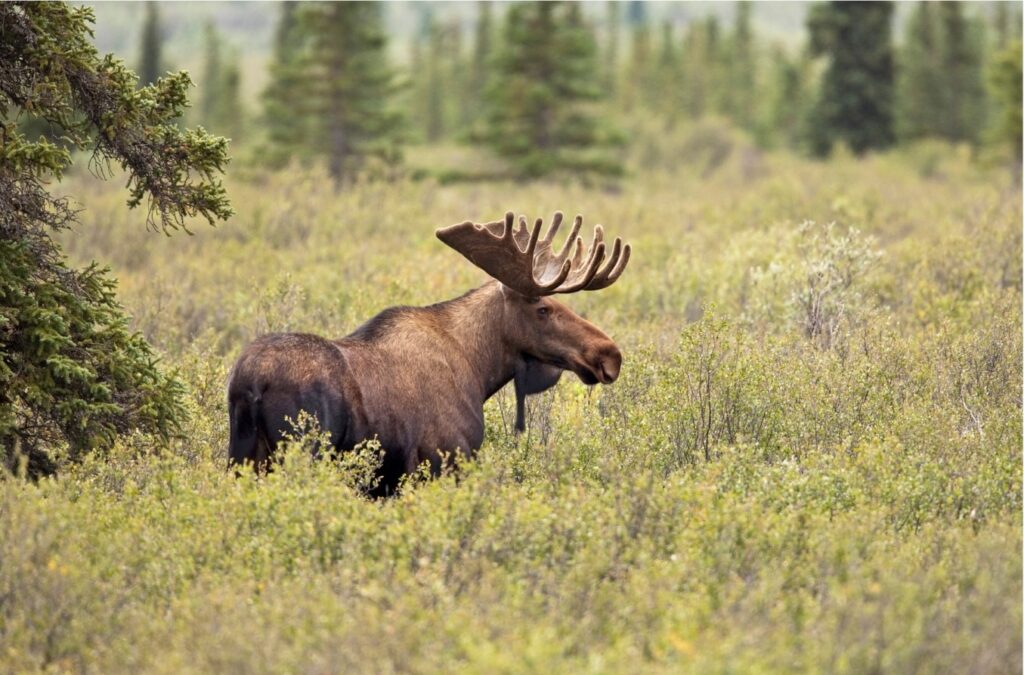
Wildlife Habitat Management Techniques
Duncan outlines the following guidelines for optimum wildlife habitat management on western ranches:
Water Sources:
- Water is a key ingredient to any farm or ranch property and the leading factor in determining the value of the land and the quantity and variety of wildlife it can support. While many western ranches have multiple water sources, including springs, creeks, or rivers, these sources aren’t always accessible to animals and they’re susceptible to drought. “With a prolonged drought that affects groundwater sources encompassing much of the West, I’ve seen a number of different ways to maximize water resources. I’ve worked with clients to build ponds, develop spring water catchment systems, and even implement water guzzlers. If you want your ranch to maintain its value, paying close attention to the water sources on the land is step number one.”
Brush & Range Management:
- Controlling the right blend of escape and bedding cover, along with the number of openings wildlife use to feed, is important for all species of wildlife. “Often, we see mountain ranches with dense deadfall of pine and aspen that provide little value to wildlife. If controlled burns are not an option – and they typically aren’t on a private ranch – a sound brush control strategy can maximize the wildlife value.”
Wildlife-friendly Fencing:
- Duncan notes that this oft-overlooked aspect of wildlife management on ranches is an incredibly important one. While barbed wire might still line the perimeter of a ranch, it can be detrimental to healthy migration paths. You don’t have to pull out all of the barbed wire fencing in place, but Duncan does suggest modifying it to more modern standards. “By taking off the bottom and top strands of barbed wire and installing a smooth or high-visibility wire, you can drastically improve the viability of the fence. I recommend leaving an 18-inch space between the ground and the bottom strand of wire to allow animals to crawl underneath it.”
Rotational Grazing Strategies to Maximize Browse:
- Another important tool for wildlife is balancing the grazing strategy. But as Duncan notes, this tip is particularly specific to each and every ranch. “If you were to ask a hundred different folks the best way to effectively run cattle on a property while also maximizing the hunting potential, you would likely get a hundred different answers.”
Food Plots that Attract More Animals:
- Food plots have long been an important tool for farmers and ranchers in the South and Midwest who also lease the property for hunting. However, there just isn’t enough information or data available for western landowners trying to create food plots for elk and mule deer. Enter Duncan’s expertise. “I’ve done plenty of trial and error food plot tests and this is what I’ve found to work at an elevation of approximately 7,300 feet. With a disc and grain drill, we have successfully established food plots consisting of a blend of winter grain rye, annual clover, and sainfoin (a perennial drought-resistant legume). With ample rainfall and the right soil, I believe this can be done on most ranches in the western states. I’ve seen it work first-hand, especially when the native browse starts to go dormant and the winter rye and clover hold green browse late into the fall.”
Wildlife Population Management Techniques
Maintaining healthy populations, including cattle, deer, elk, and antelope, on your ranch is another pillar of ranch wildlife management. If overgrazing or overpopulation become an issue, you might need to manipulate habitat in order to draw one species to a different part of the ranch. Another important aspect of wildlife population management is the utilization of predator control. Predators are elemental to a healthy ecosystem – every ranch needs a sound predator control program to benefit both wildlife and cattle – but again, ranchers need to understand the ideal predator population for their land.
When opening your ranch land to hunting, fishing, and trapping, make sure you do so with best practices top of mind. Has everyone hunting the property taken any necessary hunter’s safety course? Know when to fish, and when doing so might stress fish populations. Talk with local outfitters, guides, and other experts about current trapping regulations. Doing so will help ensure your ranch is hunter- and angler-friendly for years to come.

Benefits of Wildlife Management
As Duncan will tell you, the primary financial goal of any ranch is to break even. Wildlife can be a key factor in doing so. “If you’re running a hunting outfitter on your ranch property, you can certainly offset a lot of your operational costs.” These regulations and opportunities vary state by state. Colorado and New Mexico are very land-owner friendly, for example. If you’re looking at ranches for sale in Montana, Wyoming, Colorado, New Mexico, or Arizona, it’s important to work with a ranch real estate specialist to learn more about the revenue opportunities for that particular property.
Of course, the benefits of having wildlife on your ranch go far beyond potential profits. Wildlife and cattle can pair perfectly when it comes to maintaining habitat health, with opposing grazing and range seasons. There’s the opportunity to watch out the truck window as herds of elk or deer or antelope make their way across your acres. Those who don’t have immediate access to wild spaces and species can find it on your land. Wildlife management on your ranch runs the right direction both ways, providing safe, healthy refuge for the animals and a balanced value-add for your property.
Conclusion
Wildlife management on western ranches is the future of this unique way of life. If you’re interested in buying ranch land where you can prioritize wildlife management, the recreational real estate agents at Hayden Outdoors are experts in the field. And if you simply want to learn more about how you can integrate healthier wildlife management practices into your ranch, give Duncan Clark a call. With a lifetime of ranching in his back pocket, he’s your guy.
Expert Recommendations for Buying Row Crop Farmland
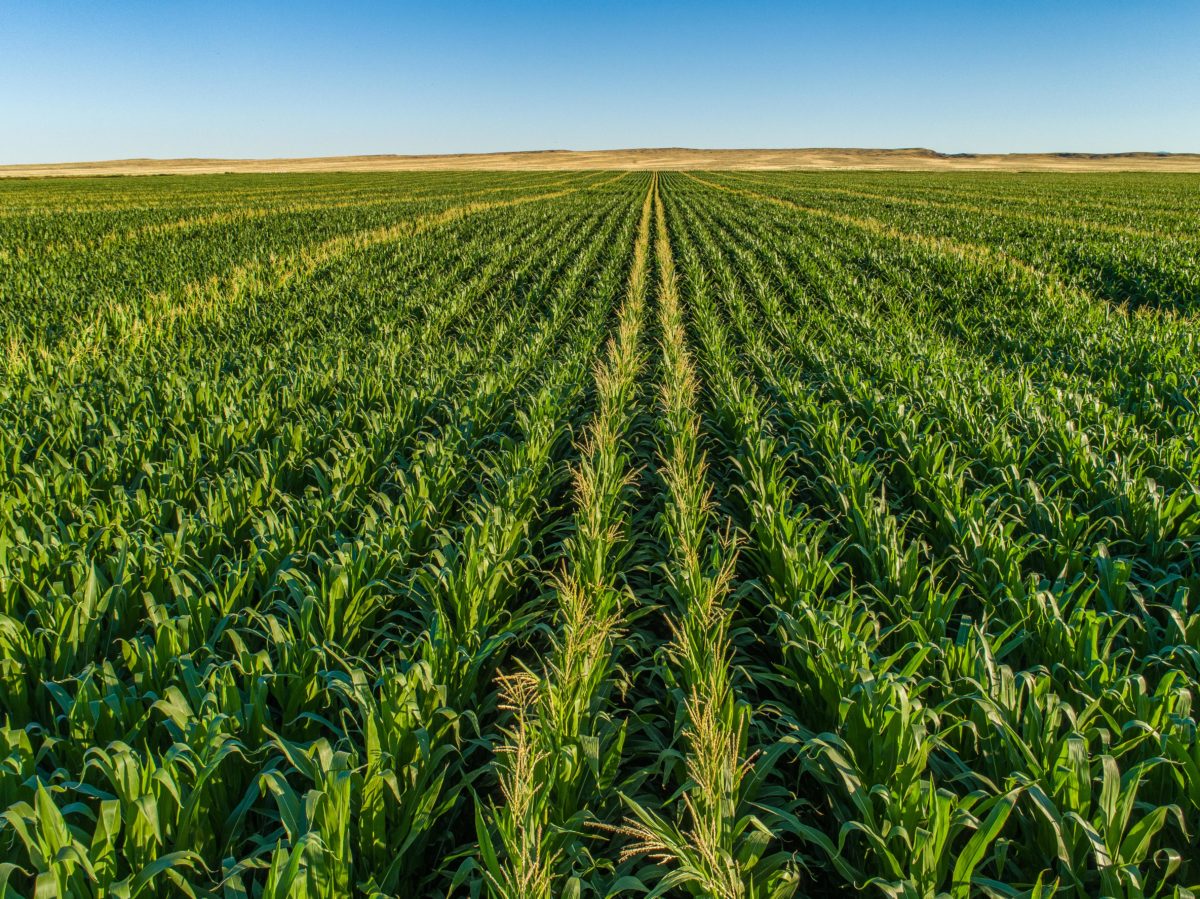
A century farm is one that’s been in a family for over one hundred years. It’s an obvious enough fact, but one you probably wouldn’t come across unless you were talking to a farmer who owns one, like John Herrity.
To clarify, he’s not the sole owner of his family’s ground – he and his siblings all claim a stake – but his family has been working the soil since 1888. Today, John mostly focuses on real estate as a recreational and large-land real estate specialist at Hayden Outdoors. But he didn’t get there by way of the city. John knows row crop farming as well as anyone can, because he’s been a part of it since he was born – a generational learner of loving and working corn and soybeans in rotation as constant as calendar years.
On a recent afternoon, John talked through some of the most important things to consider when buying row crop farmland providing a glimpse into the life-long expertise that sets Hayden Outdoors real estate agents apart from the rest.
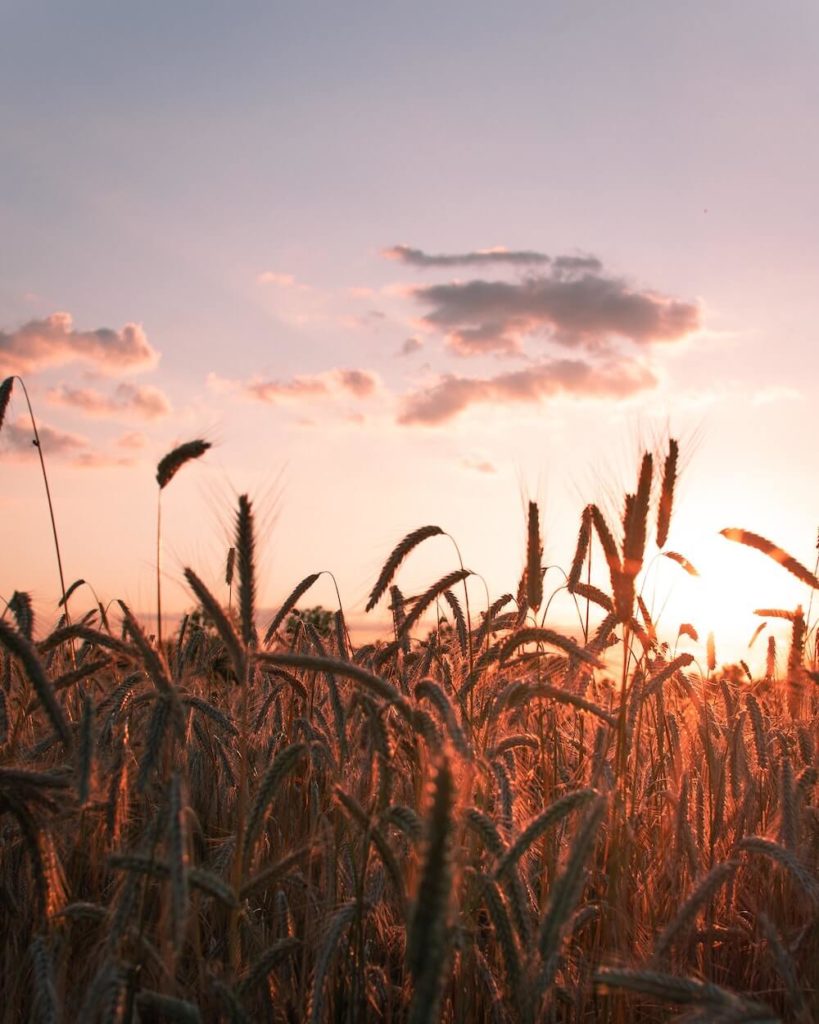
What is “Row Crop Farming?”
In its simplest terms, row crop farming, or row cropping, is production agriculture. Plants are grown in rows and then harvested by the farmer. John adds, “It has its benefits, like tractors being able to move through fields without harming the plants, allowing for easier cultivation, watering, and maintenance. Row crop farming also facilitates the optimal number of plants per acre of ground.”
What are some of the best crops for row crop practices in the Midwest and/or as an investment?
The Midwest is row crop country. South Dakota, Nebraska, Colorado, Kansas, and Iowa all offer premium farm land and growing conditions. Farmers can cultivate a variety of crops, including corn, soy, wheat, alfalfa, and organic vegetables. In the Dakotas, Iowa, and Illinois, corn and soybeans rotate because corn typically takes a lot of nutrients out of the soil while soybeans allow the land to replenish. In some parts of the region, and with the right fertilizers, it’s corn on corn combined with some no till practices.
How can farmers optimize yield and productivity in row crop farming?
The short answer is a few words – good crop rotation, herbicides, fertilizers, and watering. To elaborate on that, optimizing crop yield and productivity involves using a combination of sustainable farming practices such as precision agriculture, soil health management, and crop rotation. Farmers can collect and analyze data and then make informed decisions about when and where to modify practices resulting in more efficient resource use and increased crop yield.
What should a buyer consider when looking at farmland in the Midwest for row crops?
It depends on what type of buyer it is. According to John, “There are generally two types of row crop buyers – producers and investors. Producers should look at the land for what they can grow. These days, the typical ag land buyer is very savvy. They know what they’re buying, the crops, numbers, and yields. Investors are interested in the income of the land and will want to invest in property that provides a viable return.”
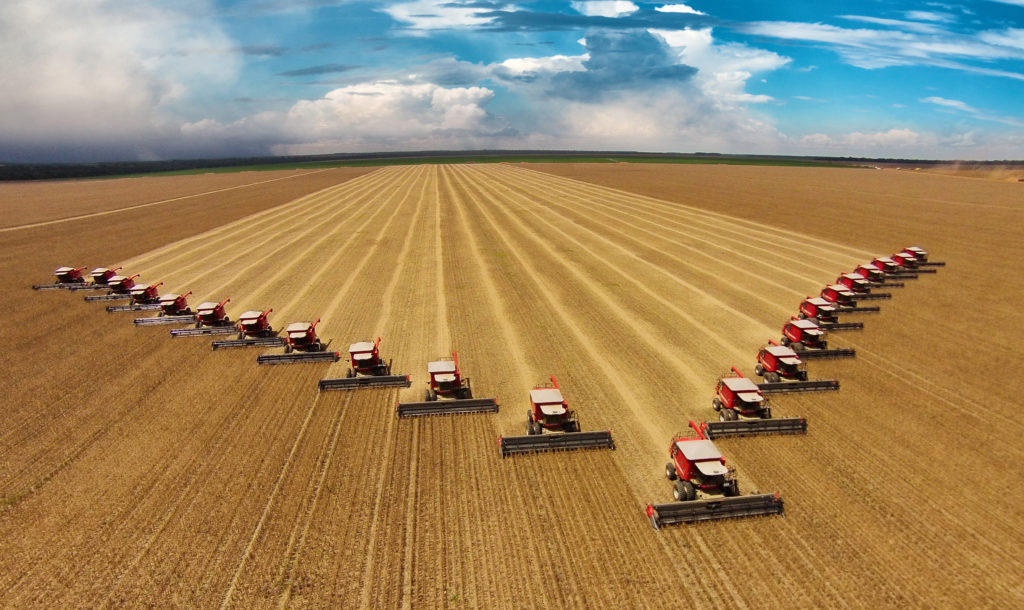
Why is soil health important in row crop farming?
Soil health is important in any kind of farming, but particularly in row crop farming. It directly affects crop health and yields and the sustainability of the land. There are a variety of things farmers can do to improve soil health such as cover crops, composting, reduced tillage, and using fertilizers. John points out, “It’s important for row crop farmers to work with an agronomist who can take soil samples and determine which nutrients need to be supplemented.” Corn and soy rotation is considered best practice to help preserve soil health.
What is precision agriculture and what are the benefits in row crop farming?
Precision ag turns the field into a grid and farmers can take soil samples within that grid, pinpointing areas within the field that need less or different fertilizer. It reduces waste and input costs as well as minimizes environmental impact. “A lot is happening in the farm world that is making farming easier and more precise. There are GPS tractors that don’t require steering. In Brazil, they’re testing autonomous tractors. Pivot systems that have GPS functions are another technological breakthrough in farming. You can be sitting on your boat on the lake and water your fields from afar.”
What are some of the technologies used in sustainable agriculture for row crop farming?
There are a variety of row crop farming practices that prioritize environmental sustainability while optimizing crop yield, including reduced tillage, cover crops, composting, and organic farming. Reducing tillage can improve soil health and mitigate erosion while also increasing carbon sequestration. Cover crops aims to retain soil moisture, reduce weeds, and provide habitat for beneficial insects. Composting contributes to soil health and fertility, which reduces the need for synthetic fertilizers and organic farming eliminates the use of harmful pesticides and fertilizers.
What are some of the best practice irrigation techniques being used in row crop farming to conserve water?
As water and irrigation become increasingly relevant issues throughout the U.S., finding ways to conserve has also become important to a farm’s sustainability. While there are a variety of new technologies out there, such as drop irrigation, soil moisture sensors, and remote monitoring systems, John notes the most effective water saving technologies are actually within the seed selection itself. “Seed companies are researching genetically modified seeds that require less water or rainfall. It starts with knowing your regional seed salesman. Seed companies help educate farmers on what works best for that region and grow zone. It’s key to establish a relationship with a local agronomist for precise soil testing and amendment requirements.”
What future opportunities do you see coming up in row crops?
“If you’re looking to get into row crop farming, it’s best to find a farmer who is looking to pass the farm along to a younger generation. Farming used to be very generational – changing hands from parents to children and so-on. But these days, some kids don’t want to take over the family farm. They think the life is too remote or too difficult. In some of these cases, farmers can find someone who is looking to get into row crop farming. Other times, older generations don’t want to burden the younger family members with the estate, so they’ll sell the farm. We are seeing farms being sold to investors or real estate investment trusts (REITs).”
There are also government programs that can subsidize farm ownership if your land is enrolled. Farm Credit Services provides great lending opportunities for both investors and producers, and the Farm Service Agency offers first-time farmer financing up to $600,000.
In all, what makes the Midwest such great farm country?
In thinking about what makes the Midwest such optimal farm country – as it has been for hundreds of years – John replies, “Great climate, good rainfall. Farmers can increase their yields without additional irrigation. And of course, back in the day, pasture was important, too. Farmers found a good place to raise cattle, hogs, and families. And they settled and stayed.” Much like John’s family did in Elk Point, South Dakota in 1888.
These days, farms must meet an ever-growing demand, and families don’t always settle in for generations like they once did. But row crop farmland remains a very valuable commodity, and finding the right real estate agent to help you buy or sell it is essential to success.
The land experts at Hayden Outdoors know soil types and how to put a value on them. They understand regional rainfall, how much water it takes to grow corn, and what type of irrigation a particular crop requires. They’re an effective go-between for investors and producers. These aren’t your typical real estate agent qualifications, but it is the type of skill set you’ll find in your Hayden Outdoors professional – someone who knows how to buy and sell row crop farmland because it isn’t just a job or a hobby; it’s a lifestyle.
What You Need to Know Before Investing in Timberland
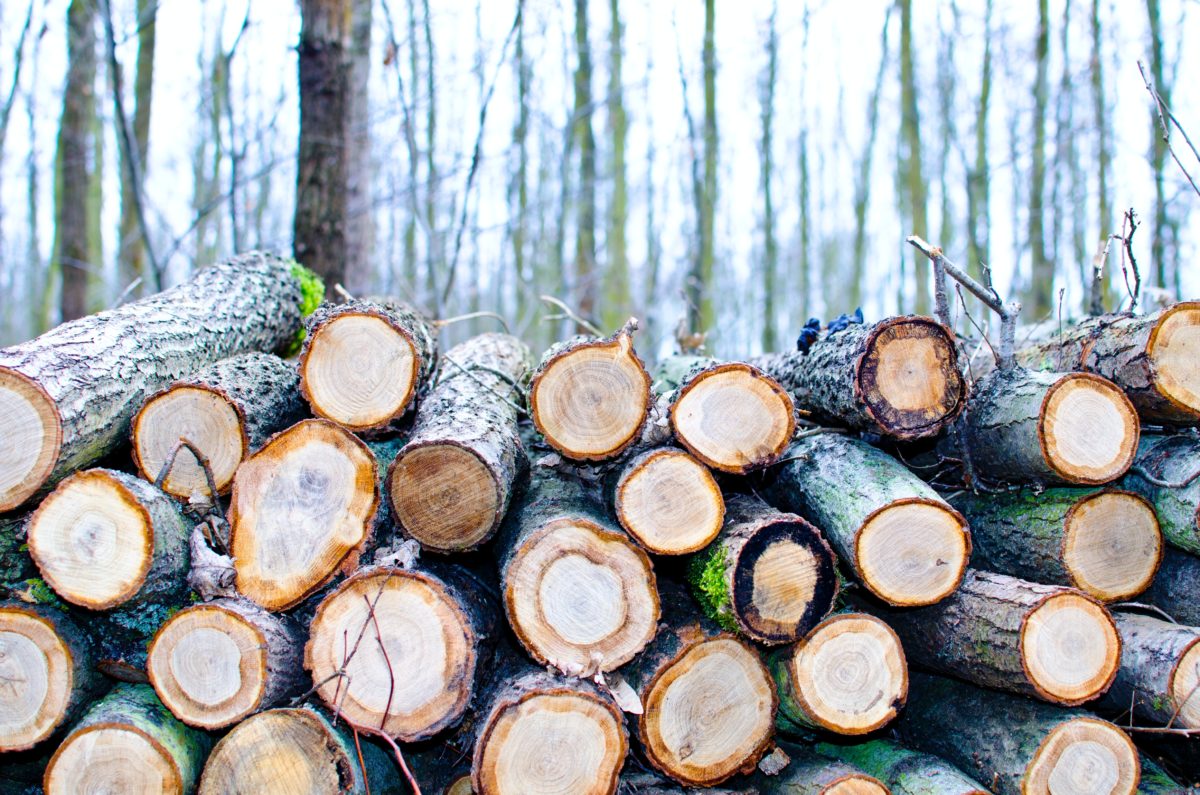
When it comes to investing in something as complex as timberland it’s best to get expert advice first. What is the current market rate for white oak? Can I sell my timber? Does timberland make for good hunting property? It’s important to talk with someone who knows both sides of the equation – buying recreational real estate and properly managing it to reach your end goals.
On a recent afternoon, we found ourselves asking some of these important questions, so we turned to the experts, Hayden Outdoors agent Jeff Lovan and his long-time friend and professional logger, Austin Gauldin. They were out in the field, doing what they do best – morphing a dense swath of old growth forest into healthy, thriving land, optimized for growing timber, harvesting logs, hunting, and year-round recreation. Jeff and Austin offered up the kind of expertise one garners from a lifetime spent in the woods, where the office is the front seat of a farm truck or a ridgeline overlooking treetops.
What to Consider When Determining the Value of Timberland
We asked Jeff what his process is for determining the value of timberland, and he offered up this insight: “Buyers need to remember that timber is a commodity, just like corn and beans. That means the value of timber goes up and down, depending on market demand.” He also wants to know if the land has ever been cut – and if so, when – in addition to how healthy the trees currently are.
“I don’t do a lot of traditional timber surveys. I lean heavily on someone who can walk the property and knows the wood – someone who sells timber every day of their lives and knows exactly how much the trees are worth. The guy who’s gonna be making the sawdust is the best person to give an idea of how much the timber is worth.”
Enter Austin Gauldin.
Jeff and Austin have been running around the Ozarks their entire lives, but Austin has made a living of knowing the ins and outs of southeastern Missouri’s forests, and the ups and downs of the timber industry. We were curious about what the current price of timber is in his region. He told us it depends on the type of tree, what you want to do with it, and how the market is reacting on that particular day. “Right now, walnut and white oak are where the money is.” According to Austin, walnut has always been a sought after wood, but white oak is a relatively new timber trend.
“Today, walnut is selling for anywhere between ¢.40 and $8 – $10 per board foot. White oak can also bring in a lot of money – white oak hardwood veneers are very popular right now, and less-perfect pieces of the white oak stave logs go into making wine and whiskey barrels.”

The Biggest Risk in Investing in Timberland Property
The most prominent and obvious risk when investing in timberland property is market volatility, assuming your aim is to monetize the timber itself. Jeff continued, “When you’re buying timber property, you’re subject to the fluctuating markets. I watch commodity prices on an hourly basis.” Austin chimed in, “And you can’t just look at a piece of ground with a bunch of big trees on it and assume those trees are valuable. What you see on the outside of a tree isn’t necessarily what’s on the inside. Timber can be rotten on the inside.”
It’s best to play the long game with timberland, which means having a thorough understanding of the types of trees you plan on harvesting now, and how you want to manage the forest in the decades to come. Walnut in particular is a very slow-growing tree. Talking with a local timberman or forester to determine which trees to harvest today to allow smaller, healthier trees to sprout up in the future is important.
Tactics for Managing Timberland
When we called to ask about timberland management, Austin was doing just that – walking new property and deciding how best to take care of the forest. He offered some tips and things he looks for when managing timberland, including:
- Identify old growth timber and its current market value. Then select the trees you want to cut and sell; depending on quality, these logs are good candidates for the local mill. You’ll also get to the wood before detrimental bugs, such as pine beetles, ash beetles, and lighting storm damage.
- Wait to thin trees until summer or early fall. The trees will be fully leafed out when cut, which makes for extremely good habitat and bedding for deer. This is something to consider if you plan to hunt your timberland.
- If you find a place that has young and old growth in it, work with a local timberman or forester to determine which trees need to come out based on ecosystem diversity, tree placement, etc.
- There’s only so much water in the ground for trees to grow. There is only so much water on the ground. If the trees are too thick they compete for the water and don’t grow as fast. So thinning your timber will give you a healthier stand of timber and trees.
- Thin dense bunches of trees. This allows more sunlight to reach the forest floor, and increases the return of growth of the trees.
- Plan to re-cut your land every 15 years.
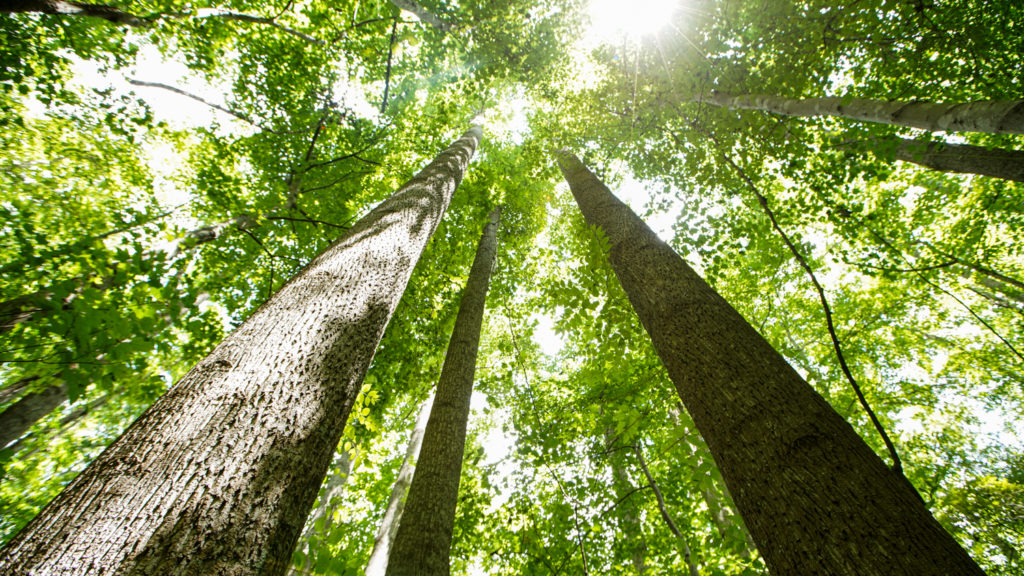
Tips for Making Your Timberland More Valuable After Harvest
Jeff noted that it’s important to multitask when taking trees out of your new timberland. “While you cut timber, consider putting in food plots, roads, and trails that allow access to every inch of the property. Land isn’t overly valuable if you can’t access it.” He notes the importance of diversifying roads and trails to include those accessible by truck, ATV, horse, and on foot. Take wind direction into account, which can come into play during hunting season.
Austin added, “You’ll find better trees on the north- and east-facing slopes are typically the best growth in the Midwest which varies from region to region. These get less direct sunlight, which can be hard on trees. South- and west-facing hillsides also tend to have more rocks, and trees don’t grow as well there. Harvesting timber provides an opportunity for habitat improvements and more accessible woods.”
Government Grants for Timberland
While this varies from region to region and state to state, in many parts of the country, there are government programs and grants for timber that help offset the cost of timberland management. In Missouri, this is known as TSI, or timber stand improvement. The program incentivizes timberland owners to properly thin their trees, encouraging healthier, sturdier long-term growth. In other parts of the country, the U.S. Forest Service might offer similar programs for wildfire mitigation.
The one thing that can be really tough on your timberland and render it less valuable to either the local mill or government grant program? “Cattle,” Austin told us. “Cows are really rough on timber. Running cattle on timberland results in too much nitrogen in the trees, which will rot them from the bottom up. This is definitely something to consider if you’re looking at buying the land.”
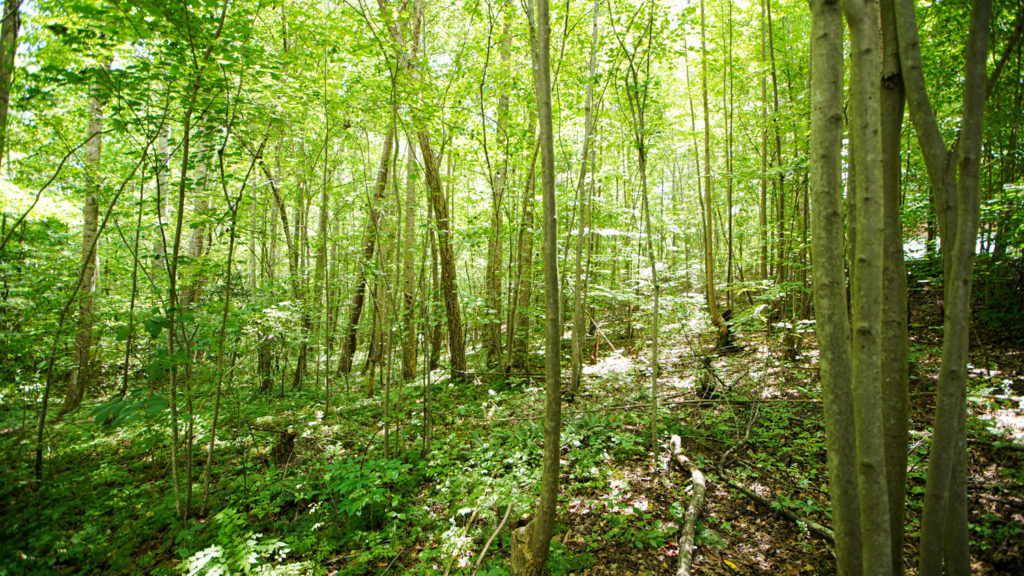
The Importance of Consulting with a Recreational Agent When Buying Timberland
When it comes to buying timberland, Jeff summed it up with these choice words: “You’ve gotta know where to sell the logs and who to sell them to in order to get the most out of your tree.” He admitted he might not know the answer to every question, but, “I can always call a guy who does.”
This is why it’s essential to work with a recreational agent when buying timberland, and the recreational real estate agents at Hayden Outdoors are second to none. They’re out in it every day, walking and working the land, and then checking commodity prices from the cab of their truck. In Jeff’s and Austin’s case, these boys were born and raised in the small town in southeastern Missouri where they live. They not only know the land, trees, waters, and wildlife, they also know the good, local timbermen. “A big part of our job as an agent is to have the local resources. I’m probably not your guy if you’re looking to sell a lot in town, but if you have some timber ground, that’s my wheelhouse. Finding the right person for what you’re buying or selling is everything.”
If you’re looking for viable timberland for sale in your neck of the woods, the recreational real estate agents at Hayden Outdoors walk the walk and talk the talk. They ensure your investment is sound and sturdy, reinforced with the kind of local knowledge that comes with a lifetime of living in and loving a place.
Pro’s Perspective on Buying Real Estate in the West
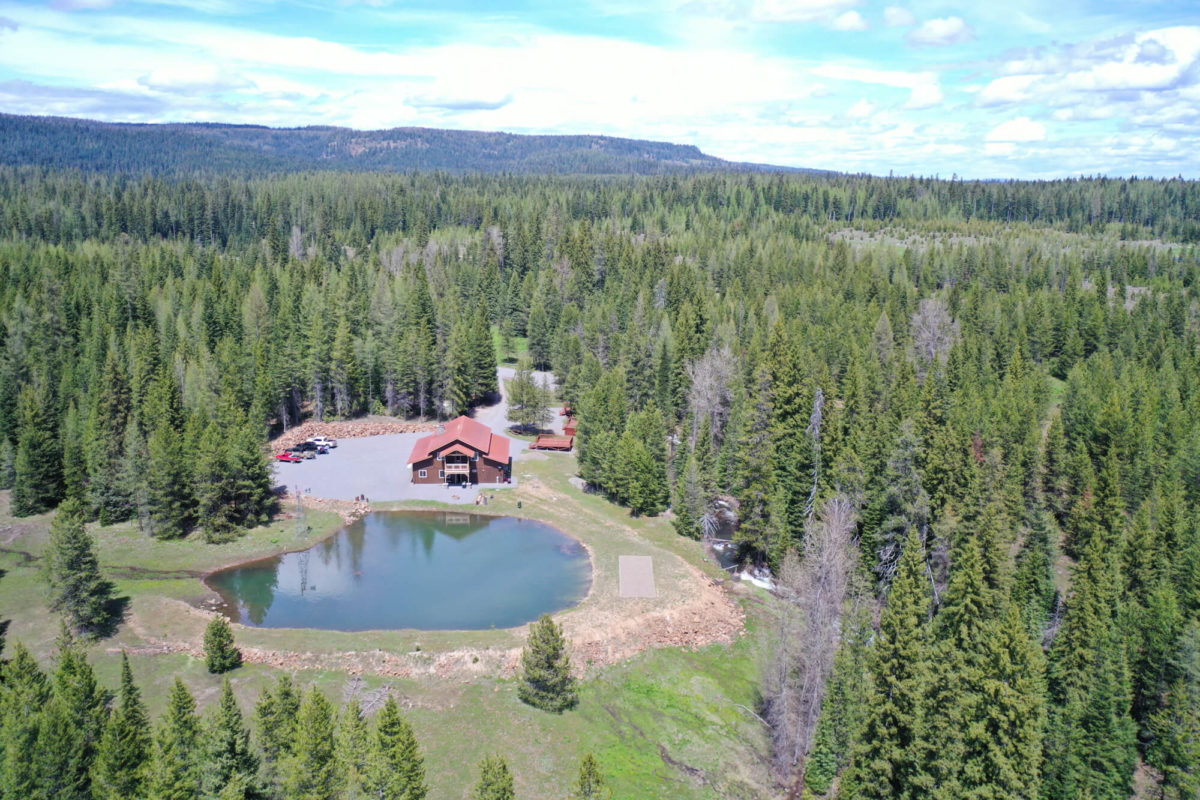
Advice Before Buying Land in the Big West
There are the real estate agents who know the square footage, can speak to how many bathrooms are enough, and whether or not the school district fits the bill. Then there are the uncommon agents with a different kind of experience. They know cows, grazing limits, water rights, minerals rights, and irrigation systems. And if they don’t have the answer, they know the experts who do. Austin Callison with Hayden Outdoors is a mix of both – equal parts seasoned residential real estate agent and highly knowledgeable expert on buying real estate in the west.
As the West becomes a hotbed for real estate activity, Austin knows the questions clients should ask when trying to find the perfect property in Idaho, Washington, Oregon and even California, since that’s where Callison grew up ranching. Austin is a ranch kid at heart, as he grew up in a small ranch community in Northern California. He moved to Boise in 2002 after playing college football in Sioux Falls, South Dakota. He’s been in the Treasure Valley ever since, enjoying the ways of the West and tapping into the intrinsic beauty of it. He’s an expert in both real estate and the nuances that come with buying farm and ranch land in the region. He gave us a glimpse into what he’s seeing in the market right now, and what he looks for on behalf of buyers and sellers.
Two Types of Buyers and a Potential Market Correction
“We’re seeing a couple of different market drivers right now. Relocation buyers are driving the housing market in my territory, mostly those relocating from California. I also work with people who are selling property somewhere else wanting to move out here and live on a little bit of acreage. It could be a horse property or maybe they want to raise their own food. That trend has definitely driven the market up. In order to stay in business, local farmers need to step up to California prices.”
While the market continues to be one of the fastest growing in the country, Austin notes a downward trend in real estate prices. “In Ada County, prices have increased 5x in the past ten years. It’s not sustainable. But we are starting to see some sort of correction, especially with rates going up.
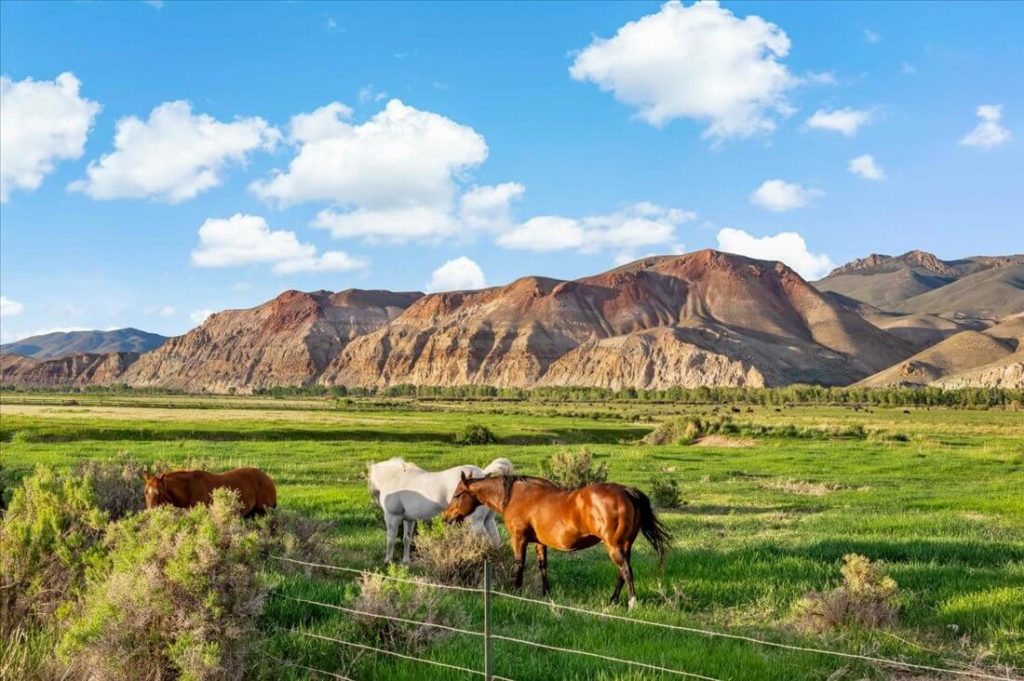
The Ins and Outs of Buying Ranch Land
As hit shows like Yellowstone evoke the romance of the West and ranch life, Austin notes it’s not quite as easy as simply pulling up stakes, hitching the U-Haul to your pick-up, and purchasing some ranch property. “I work closely with buyers to understand which leases are in place on the property. We’ve run into situations with gas and mineral leases. These can be a real ‘gotcha’. Purchasing ranch land should always be contingent on a title report. I also look at the productivity of the land and water with the property, which can be significantly impacted by drought.”
Austin is the first to tell you he might not have all of the answers, but when he doesn’t, he knows who to turn to. “I like to think of myself as a resource. When it’s time to bring in an expert, I know smart people I can put clients in touch with to help them with due diligence.”
Advice Selling Ranch Land
When it comes to selling your ranch, Austin has a cornerstone piece of advice.
“If you want to get top dollar for your ground, make sure fences and water are in place. Also, the ground shouldn’t be over-grazed. Whenever someone owns land and they don’t know the specifics of running cows, they can quickly ruin the land.” The same concept applies to farm land, especially if you plan to rent it out. “Make sure your tenant is set up to succeed. Clearly outline what is going to be planted and harvested, and have a good irrigation system in place.”
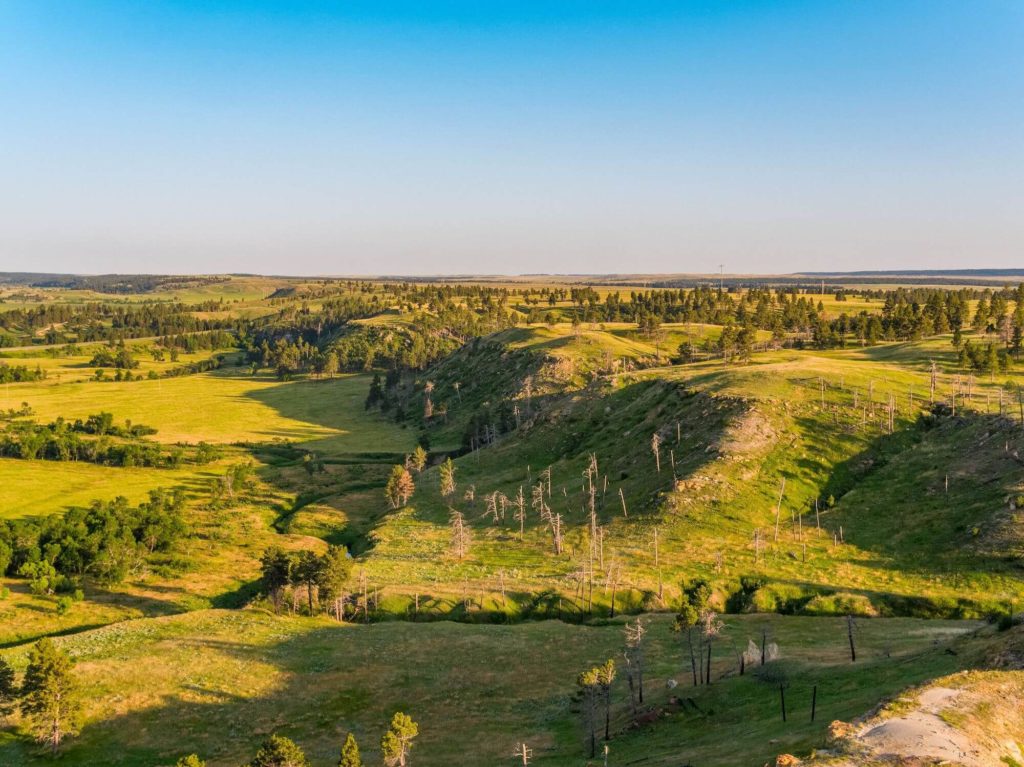
Key Questions to Ask When Buying Farm or Ranch Land in Idaho, Washington or Oregon
Austin has a few questions he always asks the realtor when buying large acreage land:
- Are there any leases in place?
- How many water rights or shares are included? Cost?
- What type of fencing is on the property?
- How are the neighbors?
- What’s the carrying capacity of the land?
- How many cows has the owner run on it in the past?
- For farm ground, what is the productivity of the land? For example, if the farmer is growing alfalfa, how many tons to the acre are they getting, and how many cuttings are they getting?
- What are the power costs?
- Are there any easements?
How a Real Estate Agent Helps in Development Projects
For buyers searching for development projects in his region, Austin says due diligence needs to be front and center. “In most cases, there is a significant amount of due diligence required for development projects. Make sure you understand which hoops you’ll have to jump through.” So, what are some of those hoops? Austin quickly rattled off a list, just to name a few. “Understand water rights, soil types, how deep the water is, where the utilities are located and whether or not you’ll need to bring utilities to the property. Is the project high or low density? Does it have a private septic system or is it on a public county or city sewer system? Are the neighbors going to push back?”
Developing land in the West has gone from luxury to necessity as rural areas absorb larger populations. “Once again, I’m a resource for my clients. I connect them with the engineers, county planners, water rights specialists, and architects to make sure the development is a successful one.”
Conclusion
Austin calls Idaho’s Treasure Valley home because he knows they call it the Treasure Valley for a reason. He hunts, fishes, ATVs, and snowmobiles. He adventures through the foothills and sage-lands with his wife and two kids. He’s a family man, a ranch kid, an outdoor enthusiast, and a real estate agent. Austin gets the West in the same way the West gets him. His career is built on sharing that connection with his clients, helping them find their own tillable, ranch-able, or development acreage. Learn more about large acreage real estate in Idaho, Washington, Oregon, and California by visiting our website or getting in touch with a Hayden Outdoors real estate professional today.
Expert Advice – Buying & Selling Hunting Land in the Midwest
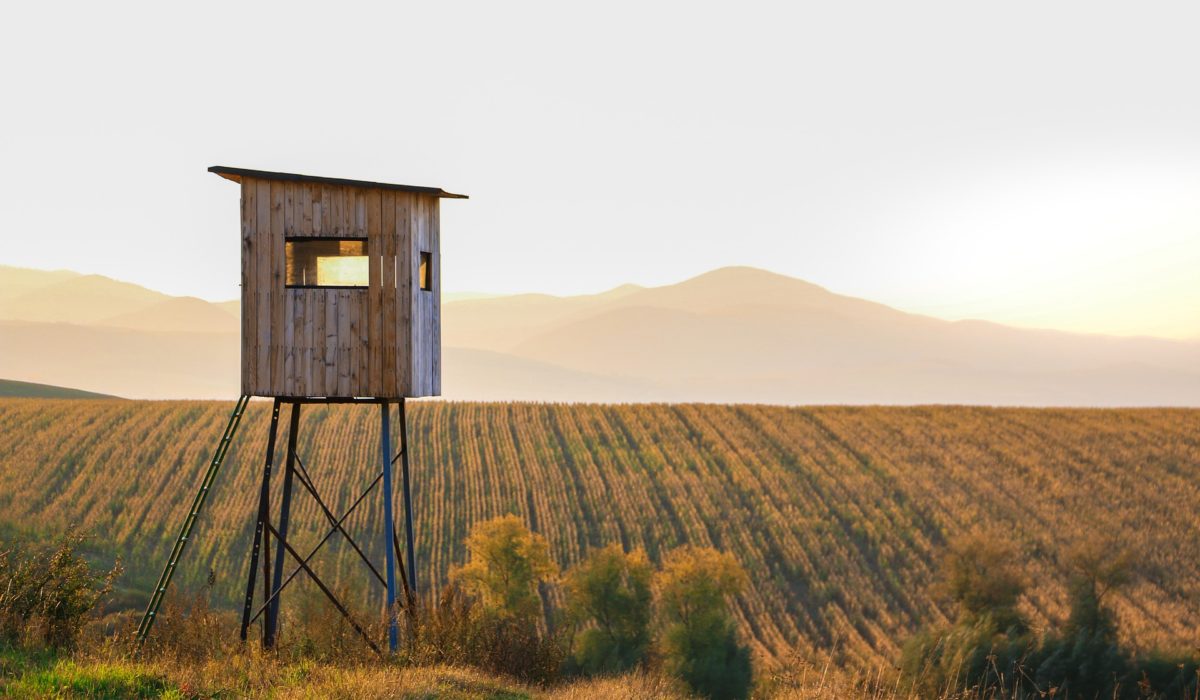
Allen Treadwell is many things – professional real estate agent for Hayden Outdoors, a contributor to the company’s leadership team, former Olympic shooting athlete, member of the exclusive Bass Pro Hunting team since 2003, television host of Life on the Land, expert whitetail, turkey, waterfowl and upland game hunter, father and husband.
One thing he is admittedly not? Desk jockey. “I can name every tree on my land, every species of animal out there, but I’m not great at Zoom.”
This is also why Allen is so good at his job as a Hayden Outdoors recreational real estate professional – his understanding of the land, its purpose, productivity, and profitability run deeper than most. He might not be an expert at online conferencing, but that’s because he doesn’t spend his days in an office, stuck behind a desk or staring out the window. He’s out there, scoping the best hunting land opportunities, walking large-acre parcels with clients, and homesteading his own couple hundred acre farm in southern Missouri.
“At Hayden Outdoors, most of us don’t just sell land; we live on the land. It’s our heritage and our passion.”
When it comes to Allen’s selling region of Arkansas, Kansas and Missouri, that passion rings true in every word. We asked him to give us some insight into buying hunting and large-acre land in this nostalgic and plentiful corner of the country.
3 Key Reasons Why People are buying Hunting land in Arkansas, Kansas and Missouri
1. The Land is Productive & Affordable
I think part of what is driving people here is how affordable the land is for being as productive as it is. With the price of land skyrocketing across the rest of the country, you can still get a sizable hunting or farming property in Kansas, Arkansas, or Missouri for an affordable price. Yes, interest rates have gone up, but they’re still relatively low compared to the past 30 years. Where I live in southern Missouri, if you own the land, you can hunt it. Every year. I think that’s a big deciding factor.
We see a lot of folks moving out of cities, or out of other places in the West that have simply become unaffordable, and buying in this area. They want 10 – 40 acres to themselves, where they can have a small garden, greenhouse and some animals. It’s becoming increasingly important for people to feel self-sufficient, and to raise their kids outside in the open land and open air.
2. Quality Climate Year-Around
The climate is also an important consideration. In a normal year, we typically get upwards of 40 inches of rainfall while our temperature fluctuations are relatively minimal. We usually don’t see temps above 100 or below zero. This makes for some really productive acres and friendly wildlife habitat. Land in Kansas, Arkansas, Missouri – these pieces of real estate offer folks the opportunity to become modern homesteaders, farming, hunting and exploring their own land.
3. World Class Hunting Opportunities
The hunting opportunities in the Midwest are incredible, especially for deer and turkey. You can even get those tags over the counter in many of these areas. There’s no draw system for Missouri & Arkansas, however, if you want a guaranteed landowner tag every year in Kansas – you must own at least 80 acres. (Be sure to check local hunting and game harvest laws in each state for up-to-date regulations.)
While other parts of the country are seeing a real estate slowdown, farms, ranches and recreational property sales in Kansas, Missouri and Arkansas don’t show any sign of slowing or devaluing. It’s a very good place to put your money; a very safe place to put your money.
How can you make Improvements to your Hunting land?

Tips for Increasing the Value of your Hunting Property:
– road maintenance (and possibly new roads),
– Repairing existing tree stands
– maintained food plots
– a history of trail cam and harvest photos and videos – anything you can add to your hunting property while you own it will return at the closing table.
As an example of land improvements you can make, Allen currently has some friends who bought a large parcel that was thick with old-growth timber. They went in and put in a road system and food plots, both of which make the land much more productive for either forest management and timber harvesting or hunting (or both). If they sell it, they could definitely do so for more than they bought it for.
Recreational properties are at an all-time high as far as value is concerned. Everyone believes their farm or hunting land should bring in the highest dollars, but not everyone has the talent of making the land great. Allen helps his clients identify what they can do to improve the property and maximize the value of the land.
Anything you can put into the land to make it better, you will get back when you go to sell it.
Why you need to have a Recreational Agent When Buying & Selling Hunting Land
If you’re in the market to buy a hunting property, I think it’s very important to find a good recreational agent who can represent you; someone who walks properties every day and will know – even faster than the buyer does – what a good property is. As a recreational agent, when I get excited about a property, the buyer I’m working with gets excited about it, too, because they know I can identify the value in it.
If you are selling a hunting property, you must have a recreational agent – someone who understands hunting, can talk hunting, and knows how to identify, buy, or sell a recreational property. For example, to get the most out of a whitetail deer property, the agent needs to know everything about whitetail deer hunting.
Additionally, my job as a buyer’s agent is to ask the buyer questions: What are you looking for in a hunting property? What do you want in your farmland? At Hayden Outdoors, that’s our number one goal, to represent both buyers and sellers with our expertise and levels of care. That’s where we outshine other agencies. We care about our clients and we do what’s right by them.
The Experience Allen Brings to Hayden Outdoors
As an Olympic athlete and avid hunter, Allen has traveled the world. He has competed in countless countries, and shot on every continent except Antarctica. Yet, these days, you’ll find him content at home, in his coveted corner of Missouri. He explores real estate opportunities for his clients, or helps them prepare a property to sell. He’s a dedicated member of the Hayden Outdoors team. “They run the company as a family, and everyone feels that. It’s so, so important.”
He also spends his time wandering his own property, his six-year old daughter bopping behind him. He now gets to teach her how to spot a hidden whitetail deer or flock of turkeys, feed the cows, and harvest the garden bounty. Ask him about all of it, and Allen sums it up well, “I’ve been very fortunate. Now I like to share my experience with others.”
To learn more about hunting property opportunities in Missouri, Arkansas, or Kansas, contact Allen or a Hayden Outdoor real estate professional.

Waterfront Property in the Southeast U.S. – Where Your Dream Lifestyle Comes to Life
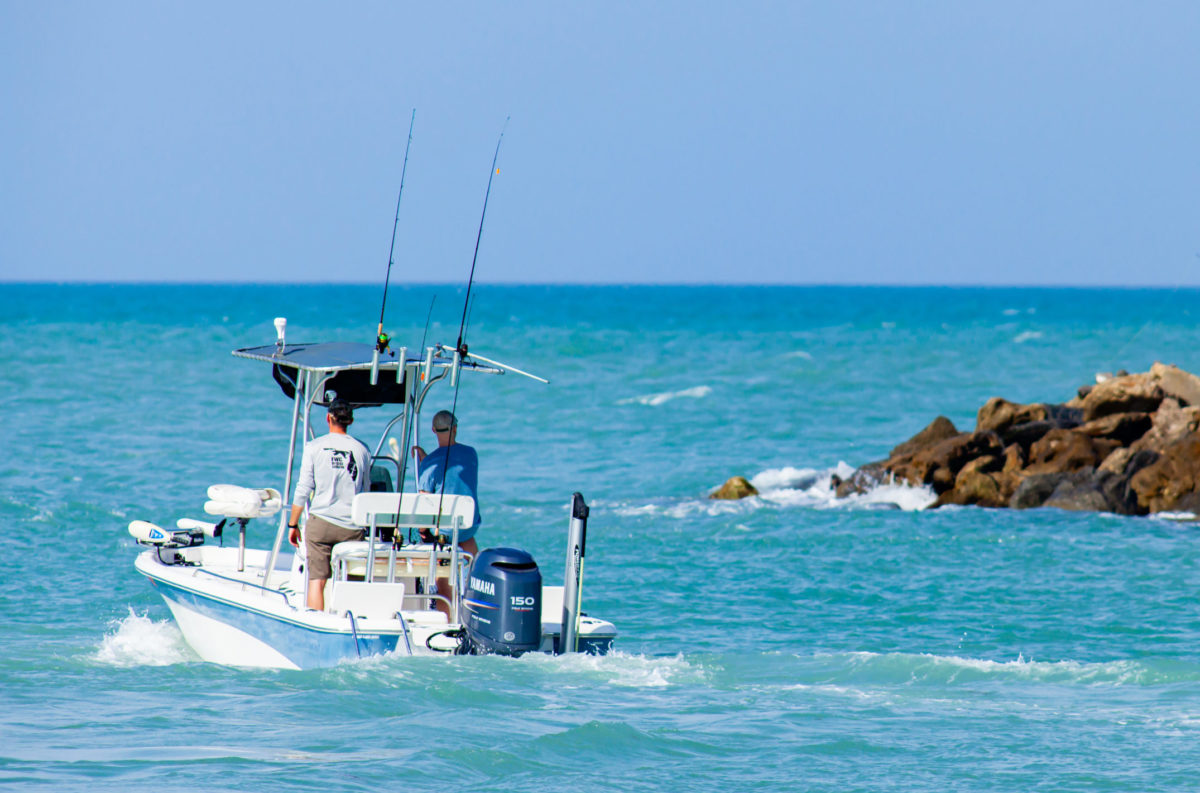
Where to Find Your Dream Waterfront Property in the Southeast U.S.
As Hayden Outdoors expands its high-end real estate services to include the enriched states of the Southeast U.S., one question tops the list for many buyers, “How far do I have to run before I’m in open water on my own waterfront property?” Which is to say, according to Hayden Outdoors Partner Greg Liddle, “The Southeast offers a certain type of freedom – thousands and thousands of untouched acres and endless miles of wide-open ocean blue. Florida alone is one of the most moved-to states in the country right now, and for good reason. The seafood is a helluva lot better on the coast!”
To listen to Greg talk about life and real estate in the Southeast is to fall in love with it almost immediately. There’s the affordability of it— if the most desirable areas of the coastal Carolinas or Florida aren’t an option, consider the quiet and sanctity of the Florida panhandle, Alabama or inland Georgia – as well as the opportunity to tap into a way of life in a place you might not have considered until now. Of course, the Southeast is as geologically diverse a part of the country as any, and Greg notes the important things to consider when looking for waterfront land, investment property, or homeownership in this region.
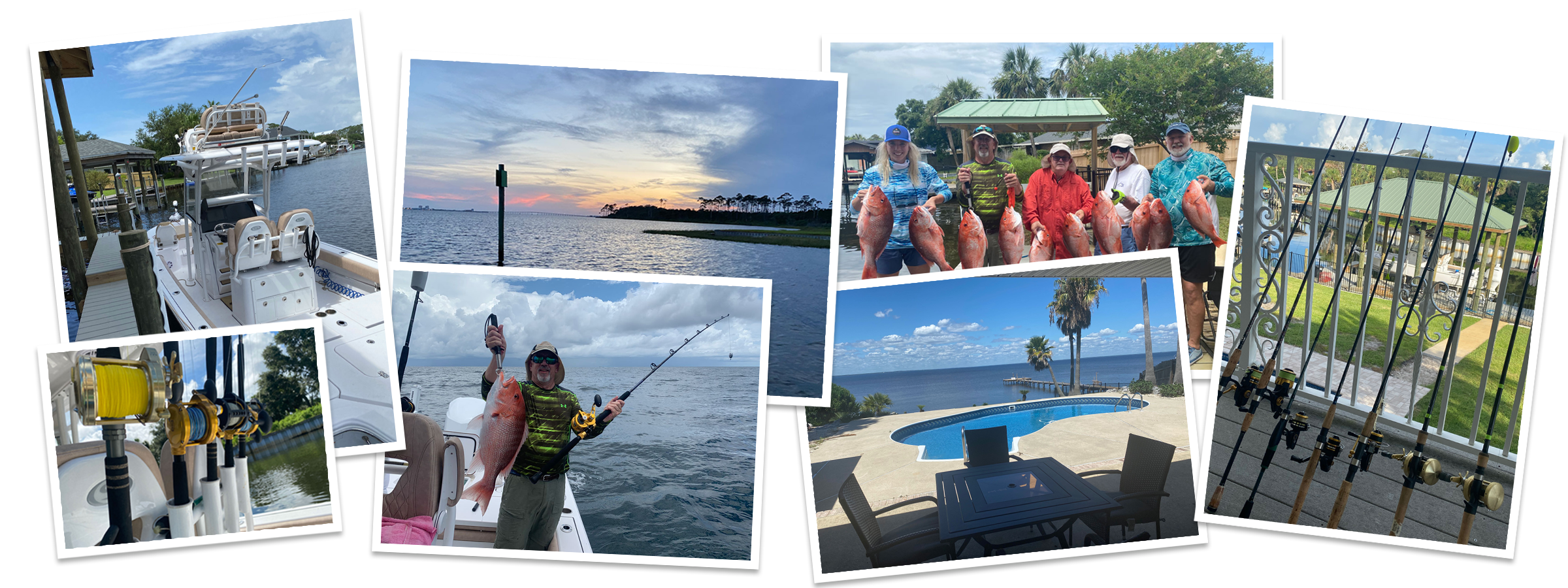

As a child of Florida, Greg has an intimate knowledge and understanding of the state and its many nuances. “For me, Florida’s beauty and its draw lie in the vast wilderness of ocean people can access from the nearly 2,500 miles of coastal Florida we represent at Hayden Outdoors. Hop in the boat, get beyond the No Wake Zone and open up the throttle before parking yourself in the midst of some of the bluest, clearest salt water that surrounds this country. It’s a lot harder to get stuck in traffic when you’re out on the ocean.”

Greg outlines some additional important things to consider when buying real estate in Florida, including:
- Easy access by boat to restaurants, special events, neighbors, access to water sports and more!
- There is no state income tax in Florida and in many places, the cost of living is below the national average.
- When looking at beach and waterfront properties, make sure to work with your real estate professional to identify those that are above the flood zone.
- Consider your desired property’s proximity to medical services and shopping.
- Florida is a popular place for people to spend the winter months. Be mindful that some areas will see the population double during this time.
- You’re going to be in a hurricane corridor every few years somewhere in Florida. Work with your real estate agent to better understand how this might affect your purchase and securing the proper homeowner’s insurance for it.
- Florida is particularly friendly for short-term rentals and investment properties.
- For aviation enthusiasts, Greg adds a particularly enticing bonus, “The Blue Angels train in the Panhandle. There’s nothing quite like going out in your boat and fishing while the planes acrobat in the sky. Blue up above, blue down below.”
- The coveted red snapper fishing season. This is a biggie for everyone from those tossing their line into the water for the first time to the fishing-is-life crowd. Florida boasts a relatively extensive season for red snapper, which typically runs mid-June through the end of July and then again for a handful of weekends throughout October and November.
While Georgia echoes many of the coastal benefits of Florida, it also boasts expansive farm land, unique hunting properties, and expansive equine properties.
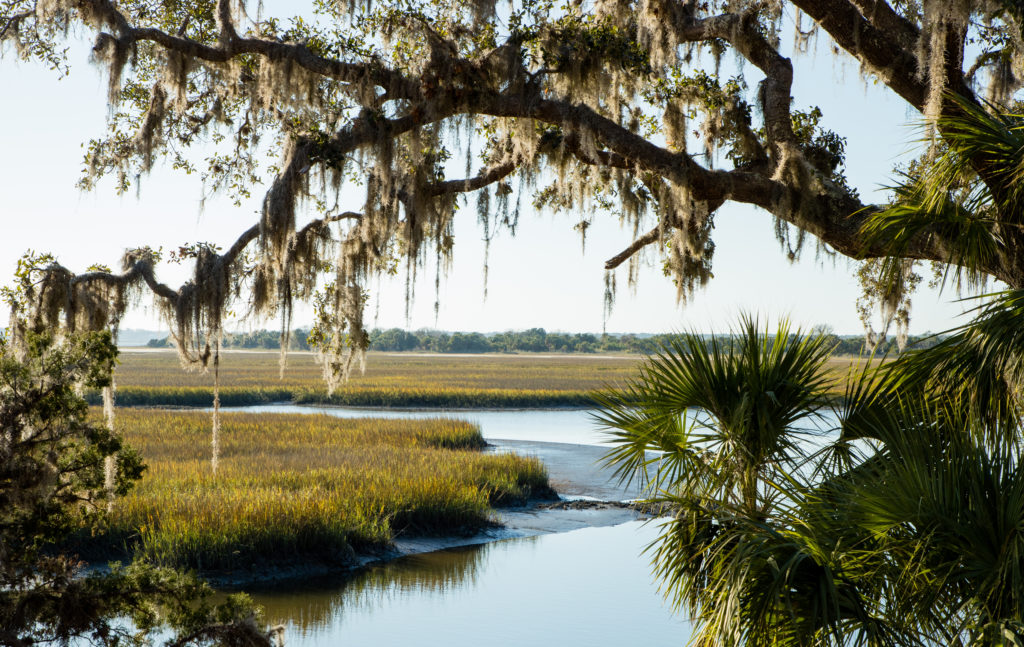
Keep these things in mind when buying real estate in Georgia:
- To coast or not to coast? It’s a big question, but a good place to start if Georgia is on your real estate search list. There are the vast beaches of Savannah, the bluffs above the Savannah River, and waterfront along Lake Sinclair. And then there’s the Low Country of Burke County and hidden historic cottage gems that pepper the state’s spectacular countryside. Chat with your real estate agent about your lifestyle goals and where you might best meet them in Georgia.
- If you do buy a waterfront property, understand your property rights, high water marks, and other important waterfront property considerations.
Recreation.
- Georgia offers a variety of ways to get outside and play. These include some of the country’s most renowned golf courses to fishing, sailing, hiking, stand-up paddle boarding, and more.
If you haven’t put Alabama on your “Top 10 Places to Move” list, then you probably haven’t been there. The inlet of Mobile Bay combines ocean living with calm waters and lively nightlife. The Mobile-Tensaw Delta is a vast river delta and wetland – one of the largest in the country in fact. Waterfront living comes in all ways here, from bays and beaches to storied bayous.
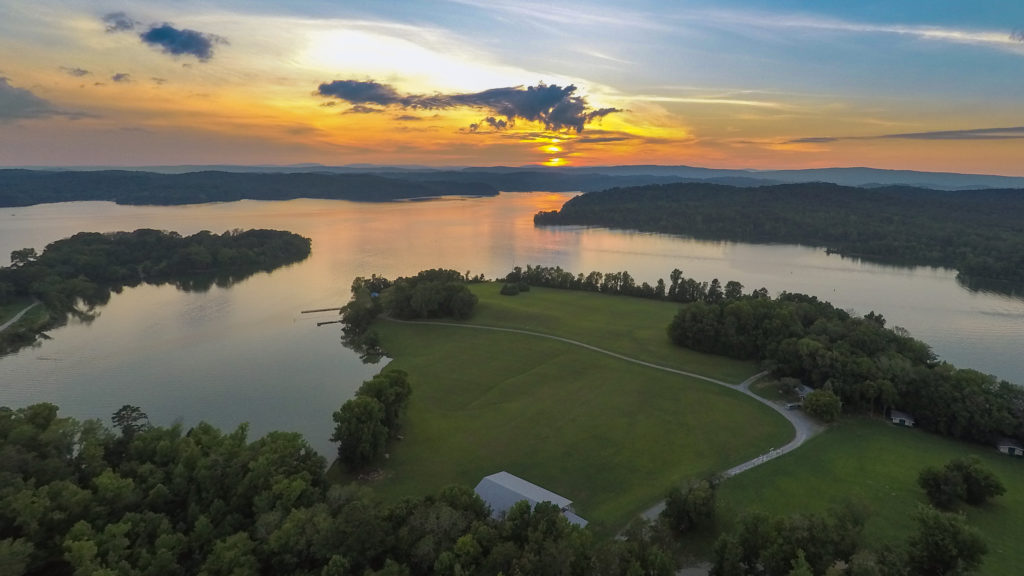
Here are a few things Greg recommends considering when buying real estate in Alabama. Roll Tide!
For those with new-found work-remote freedom who want to tap into one of the best kept secrets in the country, make sure to talk with your Hayden Outdoors real estate representative about Alabama. Neither your pocketbook nor your way of life will be disappointed.
- Climate – and really, this is a big consideration anywhere in the Southeast because it can vary more than one might think. The trade winds blowing off the coast can cool things down quickly, while inland climes tend to be more humid and consistent year-round.
- Chat with your real estate agent about how living near a flood zone might affect your property purchase and long-term viability.
- Like many other states in the region, look for higher indications of hurricane incidents where you’re considering buying, and note the costs of insurance when buying property.
- If you’re looking to rebuild or remodel, you might need to build your home up above the floodplain.
- If you don’t want to make an investment in a waterfront property, Hayden Outdoors can help you find a boat slip or more affordable property that includes waterfront access.
“Carolina beach music,” Dupree said, coming up the porch. “The holiest sound on earth.” It’s a line from Beach Music by Pat Conroy, one of South Carolina’s most notable writers. He wrote about South Carolina the way so many of its residents live in the state – with love, celebration, exploration, and an undeniable island vibe. The inlets of Hilton Head, the cobblestone history of Charleston, the 60 miles of serene coastline of Myrtle Beach – South Carolina doesn’t shy away from everything it has to offer.

Keep these things in mind when looking for real estate in South Carolina:
- Assuming you’re moving to South Carolina for its beach life, think about which beach might be the best fit. Surfers often love Folly Beach best. Those looking for a little luxury should consider Hilton Head and its many amenities. Investors might want to consider Sullivan’s Island, while first-time home buyers can often find friendlier costs in Surfside Beach.
- Scuba diving is fantastic here (and this includes rivers and lakes as well as oceans), so for those who want to infuse their lifestyle with as much underwater exploration as possible, South Carolina is a must on the consideration list. Natural wonders and artificial reefs such as shipwrecks beckon all day long.
- To this end, chat with your real estate professional about water clarity in your area.
Consider erosion, hurricanes, and flooding as it relates to your potential real estate purchase.
North Carolina says it all in its name. It combines the waterways and coastal amenities of South Carolina with an abundance of forests, meadows, coves, and ancient mountain ranges including the Appalachian, Blue Ridge, and Great Smoky Mountains. While North Carolina’s real estate might be lesser known and lesser sought by those looking to relocate, people who live there understand its endless beauty.
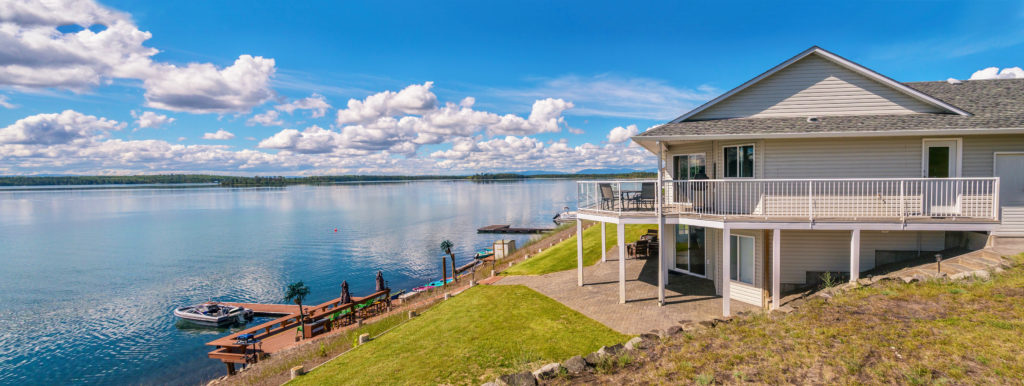
Is North Carolina real estate on your list? Consider this:
- Small town living. North Carolina has plenty of it, and it’s the kind of small town living so many of us crave right now.
- Big land living. On the flip side, North Carolina’s rolling hills and mountains offer a variety of property types, from vast farmland to hidden coves surrounded by endless green trees. If you’re looking to relocate to a place where you can afford some serious recreational land just far enough away from it all, North Carolina might be your best bet.
- There’s water here, too. From the nightlife of Wilmington to the storied Outer Banks (literally storied, as in the current Netflix hit Outer Banks), and famous off-shore fishing of Nag’s Head, North Carolina’s shoreline is the choose-your-own-adventure-kind.
- Hurricane season does descend upon the state, so make sure you understand the implications of this when buying real estate here.
- Winters here are short and mild. Summers are subtropical and the mountains can experience heavy rainfall.
If you’re buying waterfront property in North Carolina, understand the difference between public and private beach access. Greg points out, “In some areas, you’ll own a portion of the beach, but you can only build up to a certain point. Sand dune fencing can go to a certain point and the public can still access through your property. It’s important to understand which part of the beach you do, or do not, own.”

The Southeast is an extraordinary place, and for many, a very accessible and appealing one. If you crave the kind of lifestyle you can make all your own, with instant access to waterways, forests, bayous and back roads that are getting harder and harder to find, reach out to a Hayden Outdoors professional. They have the important lifelong understanding of how to achieve the kind of life this region of the country holds so dear.
Overcoming Common Obstacles When Selling Your Farm
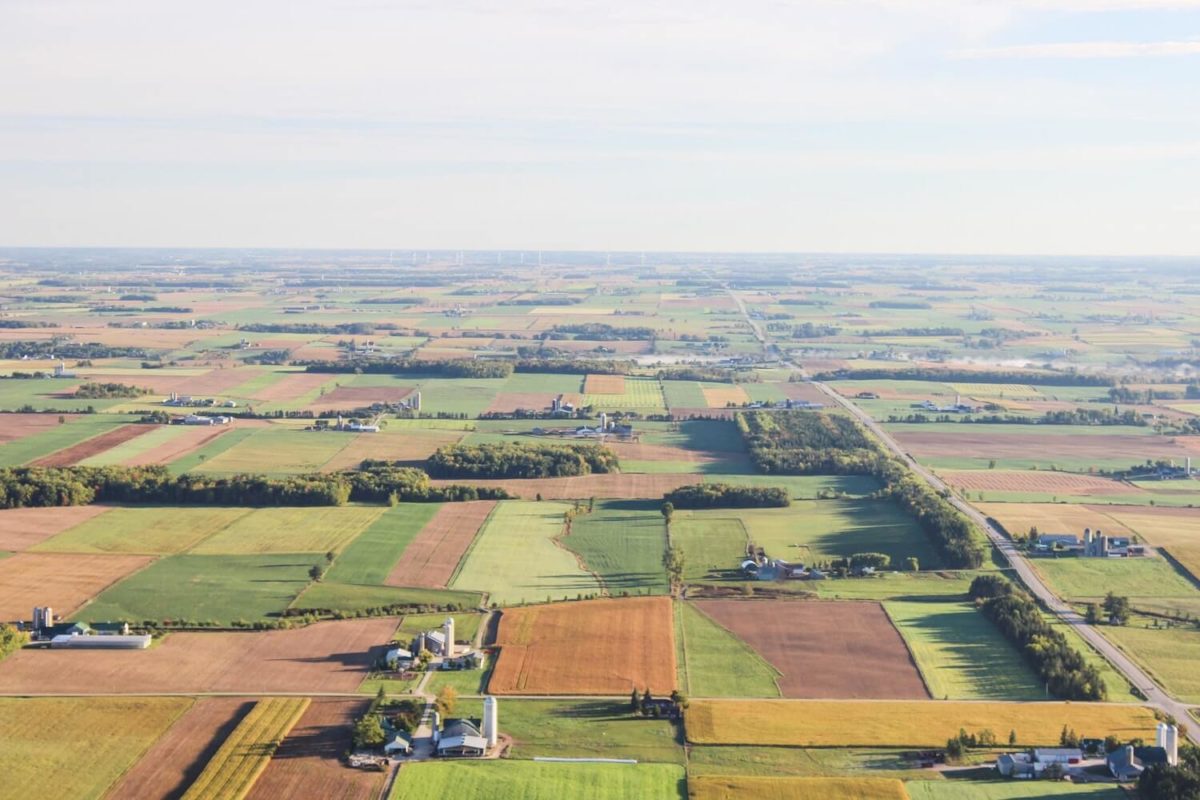
In a recent chat with Hayden Outdoors Director of Sales John Herrity, the most common and biggest obstacles to selling a farm aren’t necessarily the land itself. Bountiful yields mean a healthy sale when it comes to selling farmland, right? Not necessarily.
“Crop yields are really only one piece of the puzzle,” said John. “And they’re not necessarily the most important. Yields change from producer to producer. A savvy farmer will come in and look at the soil’s rating and compare it to what’s currently being produced to assess the viability of the land. You can have a great farm, but if the farmer doesn’t care for the land, then it won’t produce great yields. The next farmer could double production.”
So if crop yields aren’t the biggest obstacle to selling your farmland, what is? Well, it’s really all of the things we don’t think about when we think of farming. These are some very common setbacks when it comes time to put your acres up for sale.
Long-term leases and other agreements.
This is a biggie. If you decide to sell your farmland, but you have a long-term lease on the land, this can be problematic for buyers. People buying farmland are typically looking to work the land themselves. If you think you might be selling your farmland in the near future, avoid establishing any long-term leases. Alternatively, if you have a long-term lease on the land and feel it’s time to sell regardless, consider buying out the lease or reworking the terms.
Helpful Tip: Put all of your updated lease documents in one place and also make digital copies made by the real estate agent for potential buyers.
Farmland ownership models.
Sometimes a farm is a single-family entity. There’s one name on the title. If this is the case for your farmland, your sale will most likely be straightforward. If not, things could get a little sticky. Farms with multiple ownership stakes require a stakeholder consensus to sell. If everyone is on the same page, this will be easy to establish. If not, putting the land up for sale will need to wait until all owners agree to the sale terms.
Helpful Tip: Meet with a trust attorney if you think that multiple entities could cause issues at the closing table.
Conservation Easements
Farms are big, expansive swaths of land that often require easements to allow for property access in otherwise inaccessible parts of the acreage. Easements are typically established with neighboring property owners or other entities, such as the Bureau of Land Management or the United States Forest Service. Buyers will want to clearly understand these easements, their permanence, and how they affect the use of the land.
Helpful Tip: Our real estate agents are experienced with conservation easements, water and mineral rights, and more. Write down your questions and give one of our team members a call to go over your inquiries.
Liens and encroachments
If the farm is the rose, consider liens and encroachments the thorns. Liens are placed on property, buildings, or equipment that have outstanding debt until the debt is paid off. Encroachments are just that – any unauthorized intrusion onto the property, either above or below the land. This can be an old fence that wanders away from its property line, an aging tree that bows from one property onto another, or a neighbor’s rusty old tractor that he or she refuses to fetch from your land. It’s best to clear your farmland of all liens and encroachments as much as possible before you sell it.
Helpful Tip: It’s also wise to have your real estate professional work with the title company to pull an ownership and encumbrances report (O&E Report), which will show any liens or judgments against the property.
Of course, don’t let these challenges deter you if you feel you’ve tilled your last acre. The experienced real estate professionals at Hayden Outdoors have been doing this for a long time – 45 years to be exact. They know the ins and outs of large farmland sales. They’re happy to help and explain as they go, ensuring you get the most out of your sale, and your farm land in good hands. Contact Hayden Outdoors today to learn more about selling your farm.
5 Things to Do Before Selling Your Farmland

Steps to Take Before Selling Farmland
Your farm might be a legacy property – a way of life that has been passed down from one generation to the next for centuries. It might be something you ventured into more recently. Either way, if it’s come time to sell your workable land, consider some key things before you do. Hayden Outdoors Director of Sales John Herrity has some tips on the important steps to take before selling your farmland.
As a farm boy himself, his insight is particularly valuable. John was raised on his family’s homesteaded farm in Elk Point, South Dakota before pursuing a career as a row crop farm appraiser, construction manager, fishing boat captain and real estate professional.
“Farmland sales can be complex. There are so many considerations that go into properly valuing farmland, including soil type and rating, percent tillable, the current ownership model and accurately mapping the property. It’s important that sellers and their real estate team be very diligent in doing the work up front before listing the land.”
1. Determine the Ownership Model
Establishing how many people or entities currently own the land is a great place to start. Is this a family farm property with one name on the title, or do multiple people have a stake in the land? If there are multiple owners, is everyone on the same page in wanting to sell? Is there a power of attorney for the owner or ownership group? The ownership model will determine how easy or more complicated the sale will be, including how sale profits will be divided.
2. List all Debt, Liens, Easements & Encroachments
Owning the land free and clear is obviously the most straightforward way to sell it, however, farms are large, working entities that often require equipment loans and easements to keep them running. Talk with your real estate professional about any debt currently associated with the property, including liens on outbuildings or farm equipment. Easements are another important thing to consider. Because farms tend to be multiple acres in size, they often come with one or more easements to adjacent land that permit access for one property owner or another. Buyers will want a complete understanding of these easements before purchasing. Encroachments (features that wrongly extend onto your farm from a neighboring property, e.g. an old fence) can be another obstacle to selling farmland and, ideally, should be rectified before listing your property.
3. Map It Out
Let the Hayden Outdoors team create a land map that accurately shows every aspect of your property. Our agents and brokers are experts at MapRight, a dynamic land mapping software. These maps show property boundaries and easements, soil surveys, parcel data, GIS layers, buildings, fence lines, and more. A proper map is elemental for prospective buyers, and can also tell a farm’s history and story in a very visual way.
4. Establish the Soil Type Classification & Land Survey Comparables
While soil type and productivity sits as a pretty important piece of the farmland sale puzzle, it can also change from one producer to the next. Any future buyer will work to produce their own yield and establish their own style of management. That’s why it’s important for your real estate professional to carefully consider your soil type. A variety of agencies, agriculture-based Universities, and websites can help determine the value of your soil type by region. Once you and your agent have established the value of your soil, they’ll help give you a look at similar sales in the area. Pricing the property based on price per soils ratings relative to nearby farms is a good starting point. If you have recent appraisals, these can help determine the marketable value for your farm.
5. Understand the Tax Implications or Penalties of Selling Your Farmland
When it comes time to sell your farmland, John suggests talking with a CPA to discuss options with 1031 exchanges to see if this is a possibility for their sale.
“I coach clients to get good advice from their accountant. Establish what the basis of the land is. If you inherited the farm and it’s been in the family forever, it will have a much different basis and tax implications than a farm that was bought in the last ten or twenty years.”
Selling your farmland might seem like a daunting task, logistically, legally and emotionally. But with the right guidance and proper resources, it can be a very freeing and lucrative endeavor. The real estate professionals at Hayden Outdoors know the ins and outs of selling farmland in a way that benefits the seller, the buyer and the land itself. The team has been doing it for 45 years, and like John, many are also farmers and ranchers themselves. They’re happy to help you navigate the complexities of selling your farm. Give them a call today to learn more.
Planning on Buying Undeveloped Land? Here’s the Pros and Cons
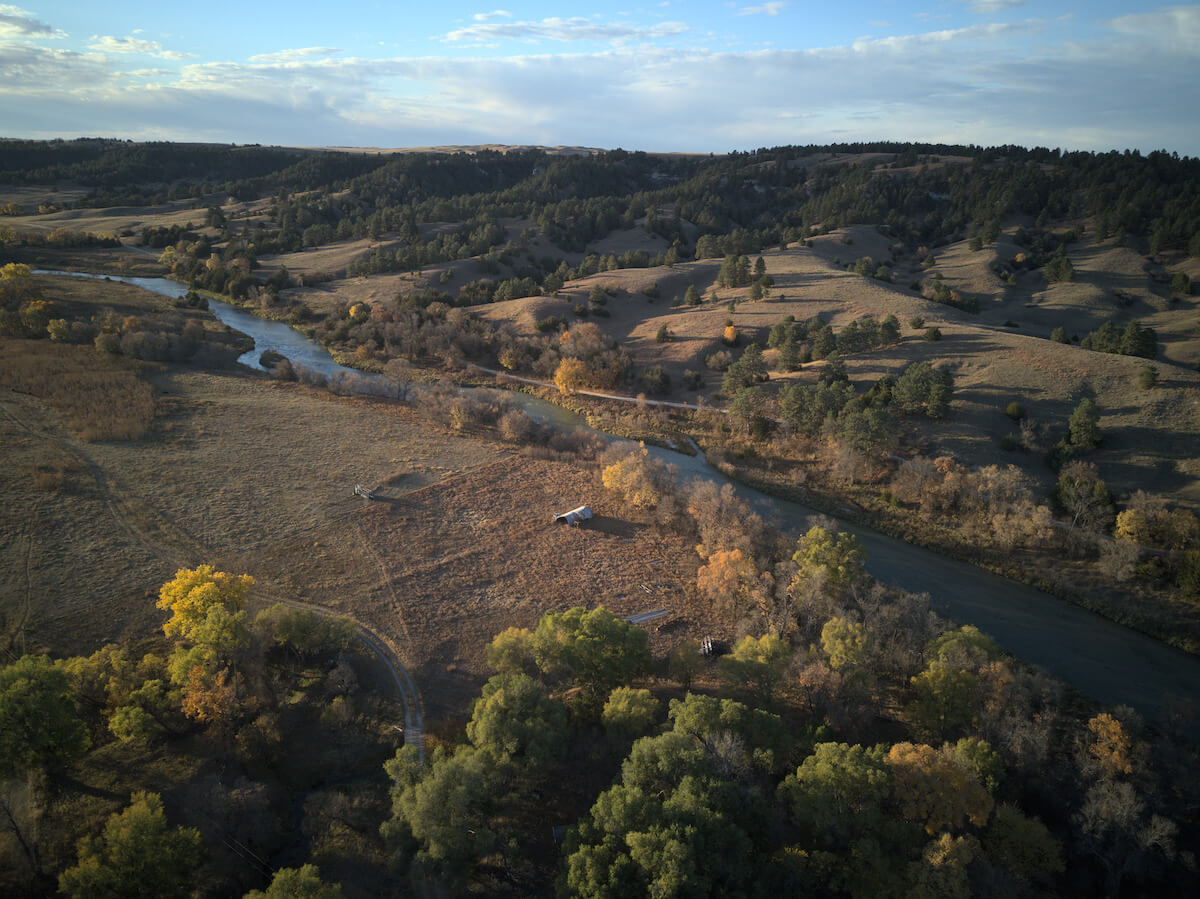
Wide-open spaces might be the hottest commodity out there in today’s market. And it’s easy to see why. Standing on an untouched building site on acres of your own vacant land, with surrounding sunsets or forests or starry night skies, it’s easy to envision exactly what your dream home could be. Of course, there is plenty to consider before you make the big commitment to buy vacant land, and then potentially build on or otherwise develop that land. Let’s explore a few of the pros and cons of investing in undeveloped land.
Undeveloped Land Explained
Think of vacant land or undeveloped land as a completely blank palette. It’s simply the land in its most untouched or natural state with no existing infrastructure. It’s never been used for farming or ranching. There are no roads leading in or out. Just the land. For years, many buyers disregarded raw land for investment purposes considering it too daunting a task. However, that mentality has shifted as real estate investing has become increasingly popular and many are leaving urban centers for more peaceful existences in rural areas.
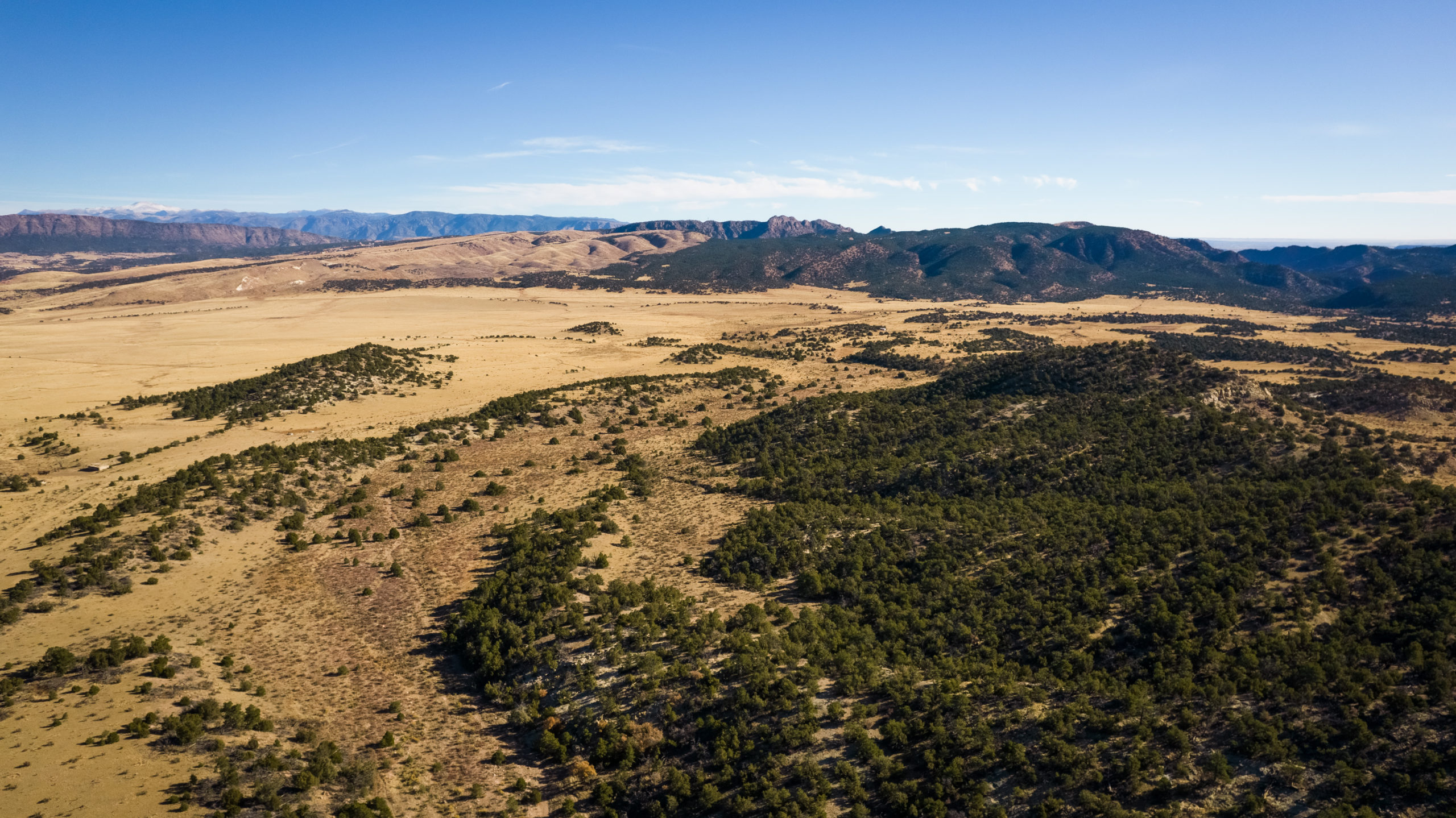
What are the Pros and Cons of Buying Vacant Land?
While the beauty and freedom of buying undeveloped land can be strong attractants, there are a variety of factors to consider to avoid unintended challenges and heartache if things don’t play out as planned. Let’s take a look at the pros and cons.
The Pros of Buying Undeveloped Land
- Quite often, vacant land is more affordable than developed properties.
- Unlike the hottest properties in your favorite resort town, you typically won’t get into a bidding war with other buyers over undeveloped land; there’s simply less competition.
- The return on investment (ROI) can be substantial with the right vision and tools to develop the land properly and profitably.
- Because it lacks infrastructure and utilities, property taxes on vacant land tend to be lower than developed parcels.
- Undeveloped land offers dreamers plenty of flexibility in what and how they want to build.
The Cons of Buying Undeveloped Land
Like any major real estate transaction or investment, it’s important to weigh both sides of the coin. Here are some very important considerations that can complicate a undeveloped land purchase:
- Assuming you’re not paying cash for the entirety of the property, and need to finance a portion of the purchase, vacant land loans can require a higher down payment and a detailed plan of how you intend to develop it.
- Zoning restrictions can create roadblocks for those looking to buy undeveloped land. Some land is zoned so that nothing can be built on it, while other parcels are zoned commercial or mixed-use, both of which will affect a large raw land purchase.
- Along these lines, conservation easements are another consideration. Often, these provide important protections for the land you’re looking to buy. However, they can also be incredibly restrictive if you plan to build, hunt on the land, or otherwise develop it.
Financing Vacant Land
As mentioned above, financing undeveloped land can be a little more complicated than a simple home loan. That said, there are some powerful and comprehensive resources available for those interested in purchasing vacant land. If you’re considering buying undeveloped land for a specific purpose, make sure to explore these organizations:
- Conterra – Conterra Ag Capital provides farm and ranch real estate secured loans to agricultural producers across the United States. For those looking for financial support to set up farming operations, extend current farming practices, or whether a particularly difficult agricultural cycle, Conterra offers managers throughout the country who can work directly with buyers.
- Outdoor Lending – In addition to agricultural land purchases, Outdoor Lending assists agents handling premier real estate deals obtain the best financing options for their clients. These purchases can include farm, ranch, hunting, resort, and recreational properties across the United States.
- Farm Credit – Farm Credit’s mission is to support rural communities and agriculture with reliable, consistent credit and financial services. The organization is committed to the viability and vibrancy of the country’s rural communities through a steady flow of capital.
Scouting the Land
Perhaps the most important thing to do before you buy undeveloped land is to give your dream property a good, hard look. Work with your real estate professional to better understand the pros and cons, opportunities, and obstacles that undeveloped land might present. Doing so will help you understand what might be involved in making the investment viable, including:
- Putting in roads
- Establishing utilities such as propane or natural gas and electricity
- Water availability, e.g. a well on-site or the need to tap into city or county water sources
- How your future neighbors might feel about your development plans
- Geological features to consider
- How buildable the land is, including whether or not your actual building site presents any steep land surfaces, rock formations that might require augmentation or removal, wetlands, or other wild land conservation considerations
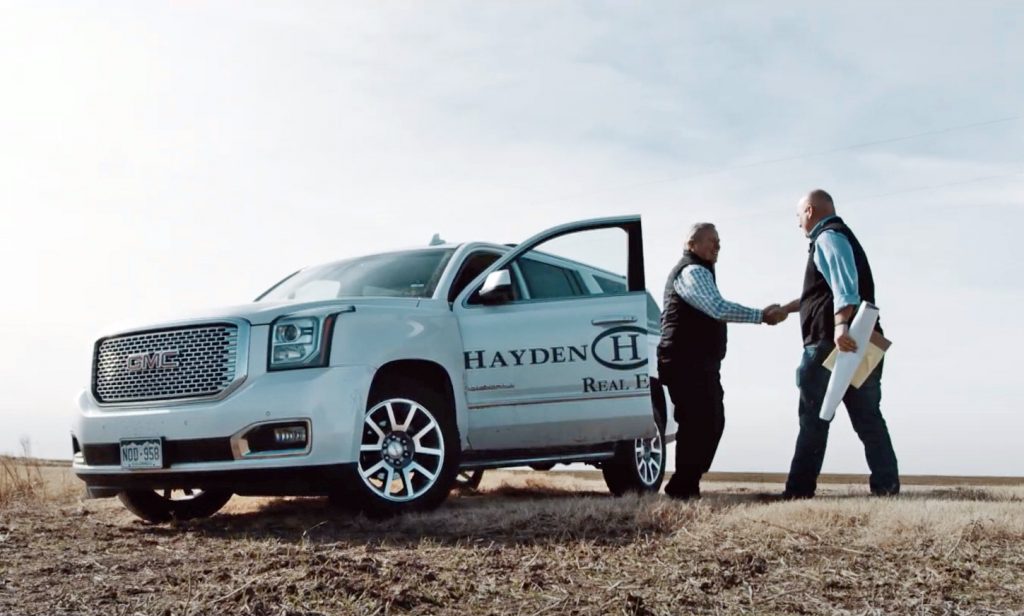
Vacant or undeveloped land really is one of the last great possibilities of our time, offering potential buyers everything from an investment opportunity to the perfect place for your dream home. Talk with your land real estate professional today to learn more about vacant land available near you, and what it might take to buy and then build.



































